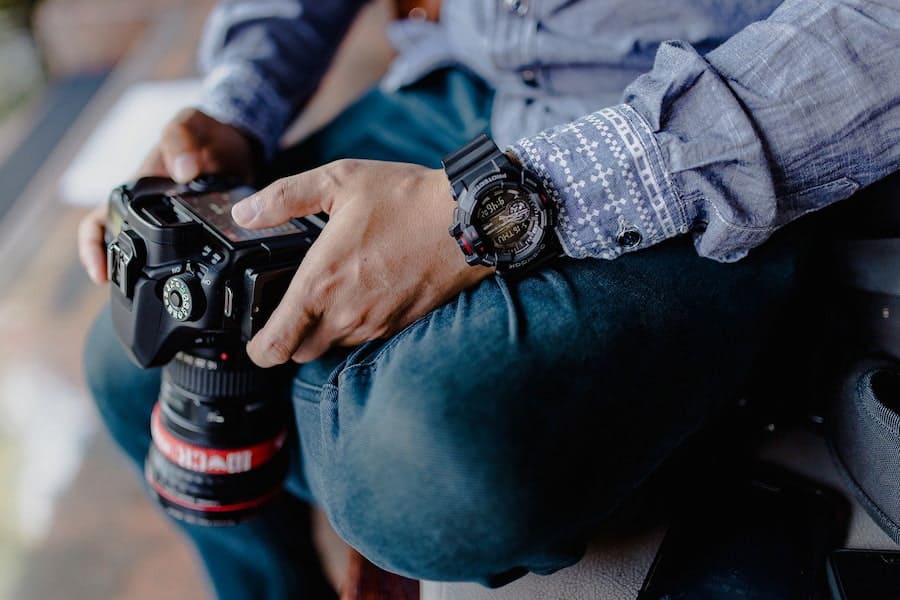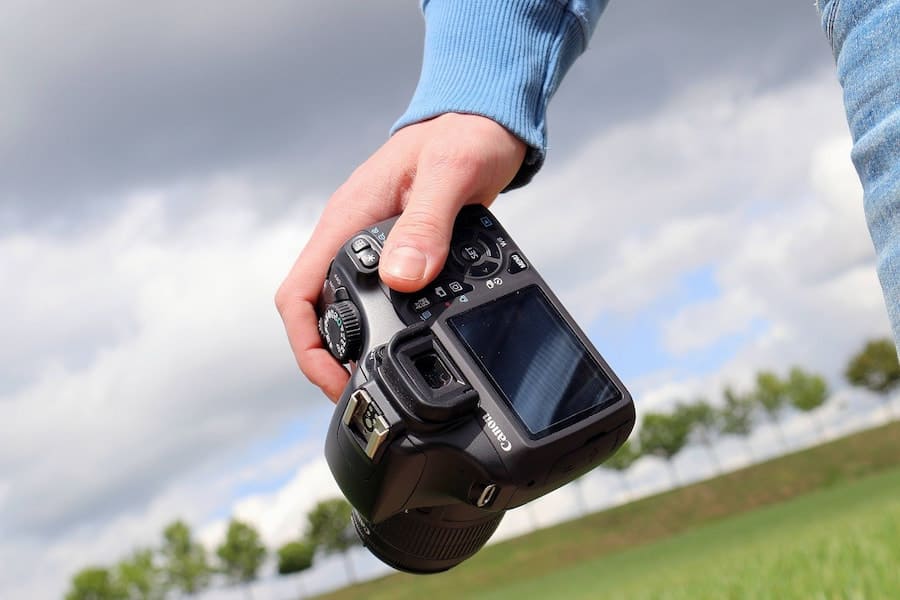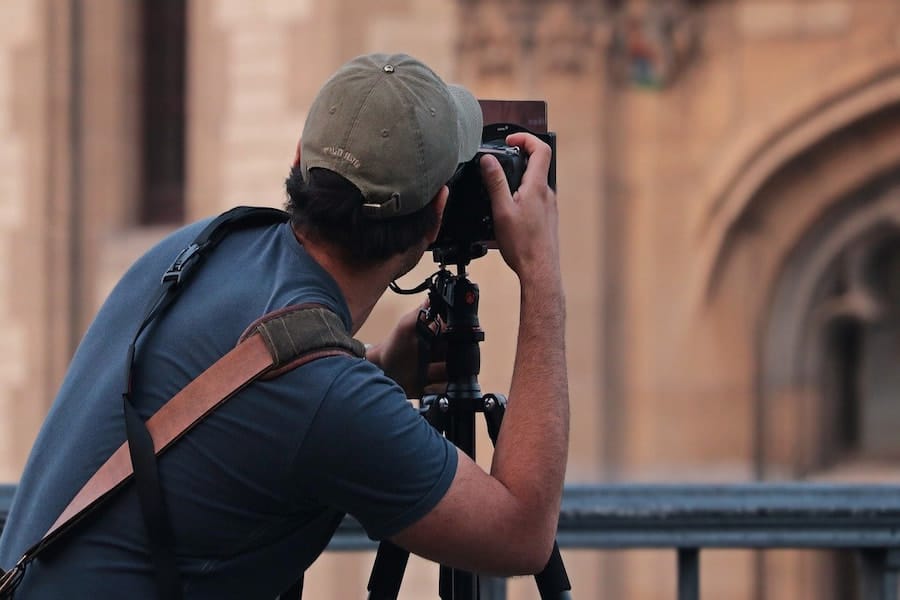
As an Amazon Associate we earn from qualifying purchases.
As a real estate photographer, I've found that monochrome can be a great way to highlight the lines and textures of a property. However, it takes some careful planning to get it right. I'm going to explain what you should do when taking a black and white photograph, even for real estate properties.
Quick Navigation
When taking black and white photos, you'll want to look for subjects with a range of tones, from deep blacks to bright whites, as this will give your photo depth and dimension. Pay attention to how light falls on your subject and experiment with different angles to find the most interesting composition.
Without the distraction of color, you can focus on the lines and shapes that make up your subject. Look for patterns and textures that can add interest to your photo. Don't be afraid to get up close and personal to capture the details.

When taking a black and white photograph, it is crucial to pay attention to contrast. Contrast refers to the difference between an image's lightest and darkest areas.
This
Position your camera to capture the interplay of light and shadow. You can also adjust the contrast in post-processing to enhance the visual impact of your image.
Lighting is another critical factor when shooting monochrome images. The right lighting can make a difference in creating a stunning image.
Remember, monochrome
I like to keep things simple and focus on the subject to create a strong composition. I look for interesting shapes, lines, and textures that can add depth and interest to the image.
I also pay attention to the rule of thirds, which involves dividing the image into thirds both horizontally and vertically and placing the subject at the intersection of these lines.

Framing and cropping are essential techniques when composing this kind of image. It involves using elements in the scene to create a natural frame around the subject, such as trees or windows.
On the other hand, cropping cuts out unnecessary parts from the image to draw attention to the subject. Both techniques help create a more dynamic and visually appealing composition.
Leading lines and symmetry are powerful composition techniques that can be particularly effective.
Leading lines, such as a road or fence, lead the viewer's eye through the image. Meanwhile, symmetry involves creating a balanced and harmonious composition by placing elements in the picture in a symmetrical way.
Even in naturally colored images, I like to combine leading lines and symmetry to add visual interest and depth, especially for properties that don't have much furniture yet.
About 87% of homebuyers rely on images to make purchasing decisions. They will depend on how realistic the properties look in your shots. Even the texture and patterns can affect their choices.
What I usually do is show an object's texture or surface quality. For instance, the smooth surface of a countertop or the rough texture of a wooden door.
Likewise, it helps to show patterns in properties. Good examples are repeated shapes of the tiles or the lines of porch columns to give homebuyers a better feel of the interior.
Most cameras have the option to shoot images directly in black and white. However, it also helps to shoot as you usually do or use filters to achieve various effects.
If you won't be using a camera's monochrome mode, here are some general shooting settings you can use.
| Settings | Values |
| Shooting mode | Manual |
| Format | RAW or RAW + JPEG |
| ISO | As low as possible, preferably around 100 |
| Shutter speed | Slower values or anything under 60 |
| Aperture | Large values like f/1.4 or f/2.8 |
| White balance | Auto |
It's best to set your camera to Monochrome mode. This will allow you to see the image in black and white on your camera's LCD screen, giving you a better idea of what the final image will look like.
Keep in mind that shooting in Monochrome mode will result in a JPEG file. If you want more flexibility in post-processing, shoot in RAW format instead.

The best way is to shoot in the default setting of your camera first and to maintain the natural colors of the scene. In this way, you'll have the RAW, colored version that you can convert to blacks and whites.
Set your ISO as low as possible, preferably around 100, to get the best results. This will reduce grain and keep your image sharp. Using a slow shutter speed to let in more light is also a good idea, but be careful not to introduce motion blur.
Adjust your exposure settings to ensure your subject is adequately lit and the highlights and shadows are well balanced.
Filters are a great way to enhance contrast and bring out details. A red filter, for example, will darken blue skies and make clouds stand out more. Meanwhile, a yellow filter will lighten skin tones and make them appear more natural.
Experiment with different filters to see which work best for your subject and lighting conditions. Filters will affect your exposure, so be sure to adjust your settings accordingly.
It's important to remember that not every color will appear the same in black and white. For example, a bright red object may appear dark and dull in monochrome.
You can experiment with different color channels and settings to achieve the desired effect. For example, in Adobe Lightroom you can use the Black & White Mix panel to adjust the brightness of specific colors in the image.
When it comes to real estate photography, the decision to shoot in monochrome can depend on the property and the desired effect. These photos can give a classic, timeless feel to a property and can be especially effective for properties with strong architectural details or unique textures.
A grayscale photo is an image that is made up of shades of gray, ranging from black to white, with no other colors present. Meanwhile, a black and white photo can include other colors that have been converted to shades of gray.
Yes, you can use flash when shooting monochrome images. However, flash can create harsh, unnatural shadows and highlights, which can be especially noticeable. To minimize this effect, consider using a diffuser or bouncing the flash off a nearby surface to soften the light.
Consider the scene's lighting, contrast, and composition when taking a black and white photograph. Look for leading lines, angles, or other elements that draw the viewer's eye into the image. Don't be afraid to experiment with different filters and effects to create a unique and artistic look when post-processing.
